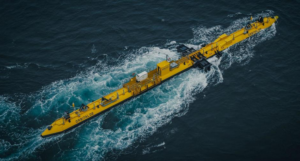For decades the immense practical difficulties of harnessing the powerful tides flowing around Britain’s shorelines have put off investors and government officials searching for big renewable energy sources.
But as the costs of deploying turbines in tidal streams fall, more and more people are seeing the potential in an energy source that creates energy as the tides ebb and flow at predictable hours every day – energy that is renewable but not intermittent.
The cost of generating power from tidal streams has fallen by 40% since 2018 – and a report published last month by a government-backed research center, Offshore Marine Catapult, forecasts prices could fall below nuclear energy in little over a decade, with one-megawatt hour of power due to cost as little as £78 by 2035 compared with £92.50 for the new Hinkley Point C power plant.
World’s deepest hole digger could unlock enough geothermal energy to power the world
Simon Cheeseman, the report’s author, argues tidal stream energy is at the “point of commercialisation” as companies are keen to scale up production and deployment. But he says the sector still needs careful nurturing to ensure it follows the successful trajectory of offshore wind, which in 11 years has gone from generating only enough energy for 4% of British homes to generating enough for 33% of British homes. “In the early days of offshore wind, you had strong government support. This is the perfect blueprint for tidal stream energy,” he says. “There is no reason tidal can’t follow that same route.”
Read more: yahoo
Ask me anything
Explore related questions





